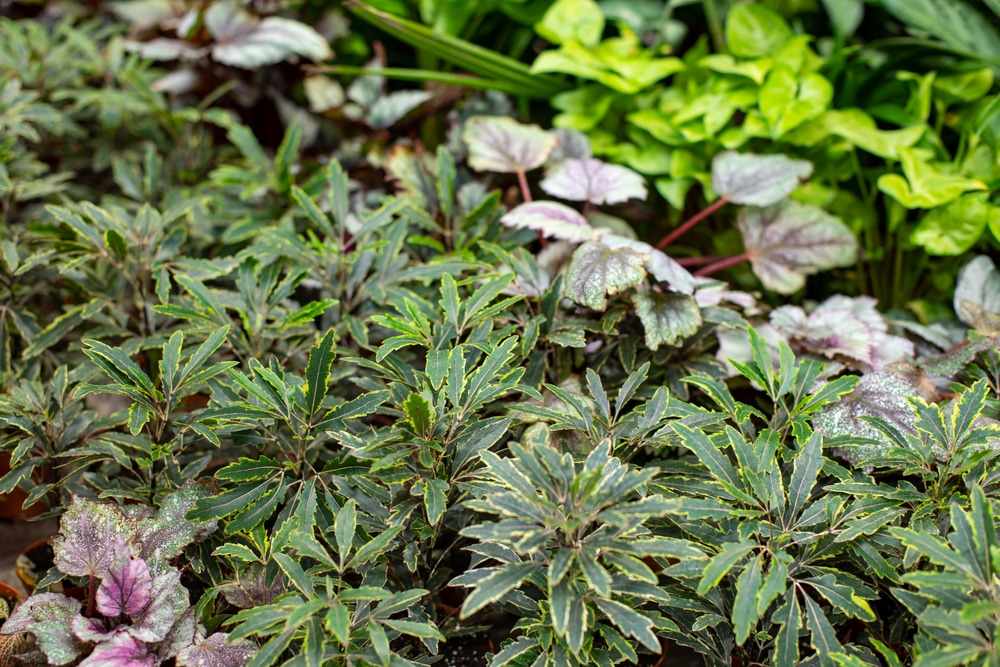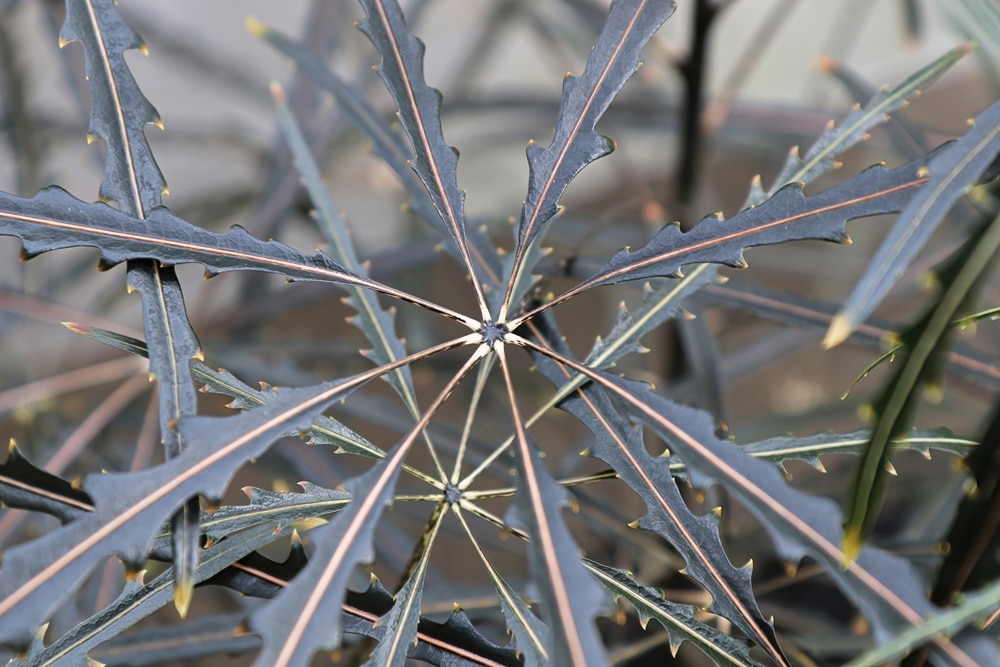You may have seen Gold Crest False Aralia in an interior design magazine. After all, this plant is becoming an incredibly trendy houseplant. And for its reasons! Its foliage is gorgeous and different from other interior plants.
Plus, the plant changes color: the long dark green leaves are red copper at first and become green as they mature. On soma plants, they may even appear black.
So, if you need something to add a unique texture to your spaces and an eyecatching backdrop, this might be an excellent option. And if you would like to learn more about this plant, read on! We collected all you must know about it in this essential guide!

| Botanical Name | Plerandra elegantissima |
| Common Name | Gold Crest False Aralia |
| Plant Type | Perennial |
| Flower Color | As a houseplant, Gold Crest rarely flowers. Indeed, the plant only produces tiny blooms in its natural habitat. |
| Size When Mature | Up to 6 feet tall |
| Bloom Time | Spring and Summer |
| Sun Requirements | Bright, indirect light |
| USDA Hardiness Zones | 10-12 |
| Soil PH Range | Between 5.5 and 6.5 |
| Soil Type | Well-draining, fertile, slightly acidic |
| Water Needs | Medium |
| Native Area | New Caledonia |
What you Need to Know About Gold Crest False Aralia
Gold Crest False Aralia is one of those plants that can help you make a statement. Native to the islands of the South Pacific, this plant does better indoors. While you may be able to grow it outside if you live in USDA hardiness zones 10-12, the plant may struggle to adapt.
The main attractiveness of this plant is the unique foliage: the long leaves have saw-tooth edges and a texture that can improve the looks of any location. And the best part is that if you have kids or pets running around your house, you won’t have to worry about them munching on the plant’s leaves: they are not toxic!
But jump to the following sections to learn more about growing a Gold Crest False Aralia at home!
How to Care for Gold Crest False Aralia
Luckily, caring for a thriving Gold Crest False Aralia isn’t as challenging as you may think. Once you get more familiar with the plant’s needs and requirements, you may be able to keep it alive for a long time!
Light
Place your false aralia in a location with plenty of indirect light. Avoid exposing your plant to direct sunlight which may affect the leaf color and damage your plant. If you live in a hot region, consider adding shears to your windows to limit sunburn. Also, rotate your False aralia regularly to encourage an even growth pattern.
Water and Soil Needs
Keep your Gold Crest False aralia moist without overwatering it. Indeed, the plant will struggle in soggy soils as they will make it more susceptible to fungal infections and attacks from pests. Allow the soil to dry before adding extra moisture to prevent these issues.
Selecting the proper potting mix is crucial here: it must drain well and be slightly acidic. Also, consider adding sand or coarse material to the mixture to improve drainage and water retention. Ideally, the pH should be between 5.5 and 6.5: you can lower the substrate’s alkalinity by adding sulfur o aluminum sulfate.
Temperature Requirements
One of the things you must pay attention to when growing a Gold Crest false aralia is temperature. Avoid exposing this tropical plant to the cold. Instead, move it to a room at temperatures between 65 and 85°F. Also, protect your plant from cold drafts and sudden environmental changes. Usually, a Gold Crest will die at temperatures below 45°F, even if it may survive brief exposure to such conditions.
Humidity is crucial to the survival of this houseplant. Mist your Gold Crest false aralia every two or three days to keep it healthy. You can even add a pebble tray to increase humidity!
Fertilizer
If you don’t like spending too much on plant nutrition, you may be happy to learn that false aralias don’t need much fertilizer. Still, you might boost the plant’s growth by adding liquid fertilizer to your plant during the spring and summer.
Common Diseases
We have even better news: Gold Crest rarely suffers from diseases and pest infestations, especially if you take proper care of your plant. And since it is a slow grower, it doesn’t need too much pruning. However, cut diseased or damaged stems as soon as you notice them prevent harming your plant.
Additionally, avoid moving your plant: goldcrest aralias don’t like sudden environmental changes, which may make them more susceptible to attacks from pests.

